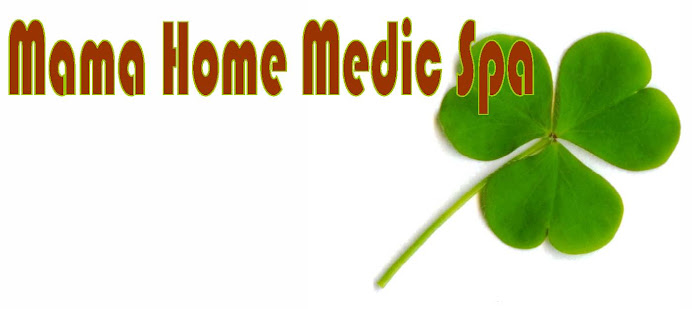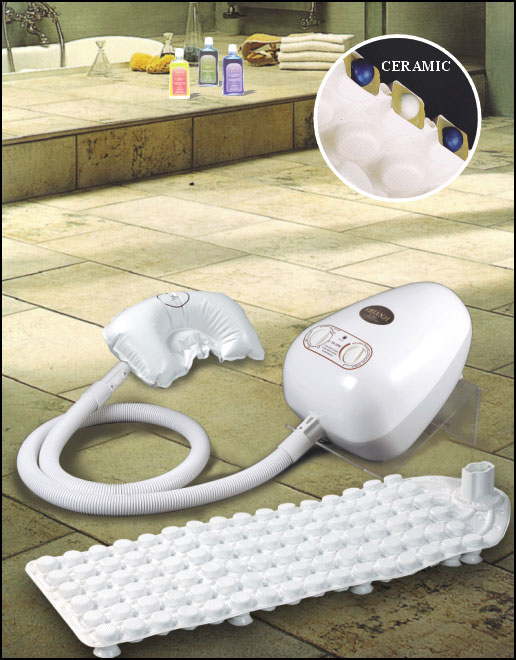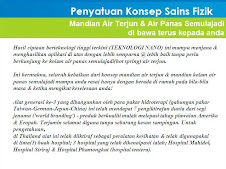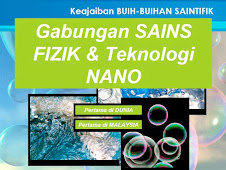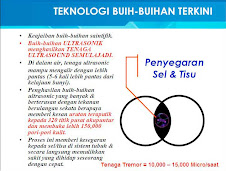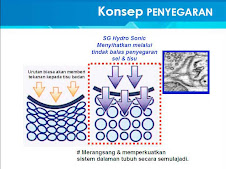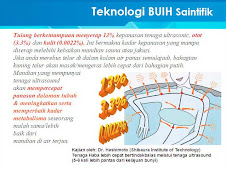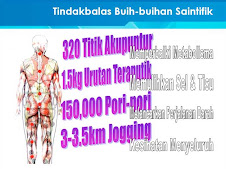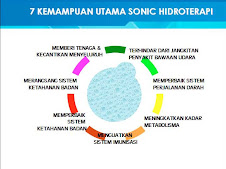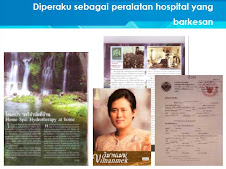Saturday, February 20, 2010
Tuesday, February 16, 2010
Healing Waters
Baths – taking the waters
Bathing is one of the oldest health promoting measures. There is probably no other health remedy which gives us such a feeling of comfort.
Every age and every culture has developed their own special bathing habits and the culture of bathing was always a reflection of the social, economic and spiritual situation of the times.
Culture of Bathing
When Europe was ruled by the Roman Empire, the culture of bathing was highly developed and taken to the occupied countries. Around 300 A.D there were more than 900 public baths in Rome and numerous private baths in the homes of the wealthier citizens. Visiting the baths was part of the daily routine. Caracalla Temple built 216 A.D and named after the Emperor Caracalla was the biggest of all. The building had a floor space of 56,000m2.
The estimated consumption of water in Rome was 750,000,000 ltr/day. After the collapse of Roman Empire the culture of bathing also declined. It took another 1000 years till bathing and other water treatments became common again.
The Science of Bathing – Balneology
(balneo, latin: bath)
Nowadays the medical science of bathing, so called Balneology, is taught at Universities and is closely related to Health Resort Medicine and Medical Climatology.
Balneotherapy is the medical use of natural remedies (water, earth, air, and climates) bound to a certain place, usually located at a health resort. That means balneotherapy is more than just using baths for therapy. Balneotherapy is mainly Health Resort Medicine.
In Germany for example the health resorts are divided into four categories:
Mineral- und Moorbath Health Resorts (pear therapy)
Health Resorts with a healing climate
Health Resorts located at the sea (Thalassotherapy)
Kneipp Health Resorts
What is bathing?
This may seem to be a silly question as everybody should know what bathing is! We will think of sitting in warm water in bathtub or whirlpool but bathing doesn’t always mean being immersed with water. We can bath in many other mediums such as:
Hot dry air – Finnish Sauna
Hot moistened air – steam bath
Peloids – moor mud, fango, clay, sand
Foam – overheating bath…………. Just to name a few
Bathing is simply immersing the body or part of it in another medium
All these mediums have different physical and chemical properties that will affect us when we change the medium that surrounds us. Usually we are surrounded by air that means there is a certain (air) pressure on our body. The average air pressure of the atmosphere on sea level = 1, 01325 bar. When we immerse ourselves in water, the outer pressure will change dramatically because of the weight of the water. The pressure will increase with the water depth causing numerous physiological reactions. Water is also a much better heat conductor than air. It can conduct heat 24 times better than air.
Physical factors that is effective in baths
Baths are often called “passive treatments”. This is definitely not true. If the human body is immersed into another medium, he has to react immediately to balance the body’s functions and to keep the homeostasis. Even thermal neutral water baths have strong effects on almost all organ systems.
Hydrostatic pressure
When diving into water the hydrostatic pressure increases with the increase in depth. 12cm (5 inches) under the surface there is the same pressure as in the central veins. Diving deeper has a compressive effect especially in the venous vessels with the result that the blood volume passes more strongly from the periphery and especially from the lower extremities in the direction of the abdomen and thorax.
Signs of stress due to hydrostatic pressure
*Feelings of tension and constriction and possible of tachycardia
*Short of breath and agitated
*Cyanosis of the lips and tip of the nose
*Bulging of jugular vein
Emergency measures
*Lower the water level
*Remove the arms from the water
*Possibly cold heart compress
Physiological Effects of Thermal Neutral Full Baths (35°C)
*Neuro-muscular system – Muscular tension â
*Endocrine system – Stress hormones â
*Circulatory system – pulsate â, cardiac output á
*Respiratory system – Inspiration â, expiration á
*Urinary system – Diuresis á
These physiological changes are only a few of the effects caused by hydrostatic pressure and buoyancy. There are much more physiological effects if the water temperature is different from body temperature and additional mechanical stimuli (e.g massaging effect via spa machine or brush bath) are applied.
Chemical factors which are effective in baths:
Water is superb solvent to most substances, due to marked polarity of the water molecule and its tendency to form hydrogen’s bonds with other molecules.
Chemical properties of baths are the properties that change the characteristics of normal water through the addition of minerals, herbal extracts, essential oils, animal products (milk, whey) or gas (CO2).
Chemical additives in baths act through:
*Adsorption accumulation on the skin
*Absorption accumulation in the skin
*Re-absorption through the skin and into the blood
Differentiation of bathes according to seize and temperature
Baths can be either partial or full baths.
Types:
Full bath – to the neck
¾ bath – to the breast, arms in
½ bath – to the navel, arms out
Sits bath – mid-thigh to navel
Foot bath – to mid-calf
Arm bath – to mid/upper arm
Temperatures of baths
Cold baths are given only as partial baths and are restricted in length to seconds
Warm baths have a temperature of 36 - 38°C and are prepared with the addition of herbs according to need. Duration 15 – 20 minutes.
After almost all warm baths, a short cold or cool treatment should follow (washing, affussion). In the case of full or ¾ bath, a bed rest of at least ½ hour should follow.
Alternate/contrast baths are given with warm water 36 - 38°C for 5 minutes and then in cold for 10 seconds. Change twice, finish cold.
Baths with increasing temperature (classic style) start with indifferent (temperature of the skin) and increase slowly to 40 - 42°C. Duration 20 – 25 minutes.
Baths with increasing temperature (modified style) start with indifferent and increase to 40 - 42°C. Duration 8 – 12 minutes and finish with a short cold treatment. (Affusion)
We will continue to look closer at the health benefits resulting from the physical and especially the chemical effects of bathing.
Physical factor which are effective in baths are:
Thermal
Temperature difference to the body, changing temperature etc.
Mechanical
Hydrostatic Pressure.
Buoyancy
Bath additives which are effectives in baths are either substances which appear in water derived from natural springs (minerals, gases, etc.) or artificially added to water (essential oils, fat oils etc.).
There are three main sources of bath additives:
Mineral
Salt, brine, sulfur, iron, iodine, CO2
Herbal
Essential oils and other substances from plants
Animal
Milk whey, milk
Additives in baths act through
Adsorption
Accumulation on the skin
Absorption
Accumulation in the skin
Re-absorption
Through the skin and into the blood
Skin
The skin is our largest organ (approx. 2m2) and has many functions; most but not all are protective. The outer part (epidermis) is an especially strong barrier against invading substances. Only a few substances like essential oils can penetrate the skin and reach the blood in the capillaries, which are located below the epidermis.
The skin consists of two parts: The superficial thinner portion called ‘epidermis’ and the deeper and thicker part called ‘dermis’. The epidermis is composed of epithelial tissue and therefore the cells are very compact, like bricks in a wall and the space between the cells is very small. Furthermore, the epidermis is made up of stratified squamous epithelium that is capable of keratinizing or becoming hard enough.
Epidermis
Most cells of the epidermis are keratinocytes, which produces keratin, the fibrous protein that makes the epidermis a tough protective layer. The epidermis is composed of five layers called “strata”. From the deepest layer to the outside there are:
Stratum basale, continuously produces millions of new cells daily which are moving towards the skin surface. In the process these cells change and create the different layers that become the
Stratum spinosum, and then the
Stratum granulosum, where the cells become flatter and fill with keratin
Stratum lucidum, only on hands and feet, where the skin is very thick.
Stratum corneum, the outermost layer or the “horny layer” consists of the pars disjuncta and conjuncta and is 20 to 30 cells layer thick.
Most substances cannot penetrate deeper into the skin than to the pars conjuncta and the underlying stratum granulosum.
Chemical effects of bath additives can be direct or indirect
*Direct to the skin to nourish, protect or treat diseases of the skin
*Indirect via skin stimulation to the general system to treat chronically inflammatory diseases
*By percutaneous absorption and elimination by the mucous membrane of the respiratory system to treat diseases of the respiratory tract
*By perrcutaneous absorption and effect in the general system to treat diseases of circulatory system and the central nervous system
Practical Hints
*Choose the right bath oil to receive the effects you want!
*Use the right amount of bath oil to prevent irritation of the skin!
*10 – 30 ml of bath oil is enough for a full bath
*Check the temperature always with thermometer!
*Sedative baths should have a comfortable warm temperature but not too hot.
*Don’t bath too long (10-20 minutes, max)!
*At the end of the bath, cool down by using cold body washing/affusion or at least a cold splash to the face.
*In case of varicose veins, a cold leg affusion is highly recommended.
*All warm full baths should be followed by bed rest of at least half an hour to get the full benefit of bathing.
Risk of Bathing
During immersion:
Increased cardiac preload results in a decompensation risk
Be careful of cardiac rhythm disturbances and Angina Pectoris.
After immersion: collapse trend
Be careful of venous disease and orthostatic irregularity
During bathing:
Burdening of the respiratory and lung function – be careful of respiratory insufficiency
Contraindications in Bathing
*Strong febrile and infective diseases
*Heart-insufficiency stage III and IV (NYHA)
*Hypertension stage III (WHO) A study about the effects of bathing in a hot tub for patients with treated hypertension was published in 2003 by the Canadian Medical Association. The result showed that bathing in a hot tub (40°C) for 10 min. is likely safe for most patients with treated hypertension.
*Acute skin diseases and large skin lesions
Monday, February 8, 2010
TESTIMONIAL: Breast Cancer, Cancer & Backache

Thursday, February 4, 2010
Thursday, January 21, 2010
Low Body Temperature Syndrome
Naturopathy expert Prof Ishihara Yumi highlighted the danger of LBTS in his best-seller "Sickness from the Cold". The average body temperature of Japanese has fallen by 0.50C in the last 50 years. Increasing the normal body temperature by 10C can improve their immunity by 5-6 times. His research also shows that cancer cells multiply rapidly at a body temperature of 350C.
Renowned world immunology expert Prof Toru Abo further elaborated the dangers of LBTS from the science of immunology. People suffering from depression and cancer usually have low body temperature, usually not more than 360C. For people who are terminally ill with cancer or depression, their body temperature seldom exceeds 350C, and it continues to decrease.
Increasing the body temperature will increase the number of lymphocytes and make them active. Hence, they will become more capable of combating the cancer cells. People with LBTS exhibit 'cold hands and cold feet' initially; then the problem changes to experiencing shoulder pain, headache, backache, constipation and eventually spread to the internal organs. He suggests 'bathing in tubs' daily as a simple method of increasing body temperature.
Colonoscopy pioneer Prof Hiromi Shinya further added: People with LBTS are more prone to suffering from bad gene mutations and hence cancer. A drop of 0.50C in body temperature results in a decrease of 35% in their body's immune functions. In his books "Living without disease - Practical (C)" and "The Enzyme Factor (E)", Prof Shinya called upon people to pay attention to this 'new health hazard'. Young girls are the most affected group of people for this sickness.
Renowned Chinese health expert and educator Dr Ma Yueling in her book "Temperature determines Birth, Aging, Sickness and Death" reiterated the danger of LBTS. Apart from echoing the views of the other experts, she also analysed how this sickness affects pregnancy and people suffering from coronary diseases. A fetus obtains its nutrients entirely from the expectant mother. Pregnant women who are suffering from LBTS are likely to have poor blood circulation. As a result, a baby given birth to by a mother with LBTS is likely to be less healthy than another by a normal mother. She advised women who are planning to have babies to start working on their body temperature before their pregnancies.
People with LBTS are also more prone to suffering from coronary diseases. Our arteries are clogged with deposits of cholesterol, a kind of fat. At lower temperature, arteries are hardened as fats solidify at a lower temperature. As the body temperature increases, arteries dilate and fats soften. Thus, the chances of suffering from coronary diseases such as stroke decrease.
References
Hiromi Shinya (2007). Living without Disease - Practical. Simplified Chinese Edition.
Ishihara Yumi (2007). Sickness from the Cold. Simplified Chinese Edition.
Ma Yueling (2008). Temperature determines Birth, Aging, Sickness and Death. Simplified Chinese Edition.
Toru Abo (2007). Immuned living without Disease. Traditional Chinese Edition.
You can read more about this 'low body temperature syndrome' and its cure from the book entitled "Ultrasonic Hydrotherapy: What, Why & How It Heals" written by Mr Tan Meng Kwang, Educator for hydrotherapy & wellness. This book is written in English.
How Do You Know If You Have LBTS?
To know if you are suffering from low body temperature syndrome, measure the body temperature with a clinical thermometer. You may follow the following procedure:
Take your first body temperature 3 hours after waking up
Take your second body temperature 3 hours after the first
Take your third body temperature another 3 hours later
Find the average daytime body temperature based on the above 3 readings
Continue to monitor your daytime body temperature for a week (for ladies, please avoid the menstruation period)
If your average daytime body temperature is consistently below 370C, you may be suffering from low body temperature syndrome.
What Are the Symptoms of LBTS?
People suffering from LBTS exhibit many different symptoms, some of which are listed below:
Cold hands & feet
Fatigue
Shoulder/neck pain
Back pain
Migraines & Headache
Constipation
Irritable bowel syndrome
Easy weight gain
Heat and/or cold intolerance
Irritability
Fluid retention
PMS
Irregular periods
Severe menstrual cramps
Low blood pressure
Frequent colds & sore throats
Frequent urinary infections
Slow would healing
Infertility
Decrease sex drive
Excessively tired after eating
Bad breath
Anxiety
Insomnia
Itchiness of skin
Ulcers
Abnormal throat sensations
Sweating abnormalities
Increased skin infections / Acne
Asthma
Decreased memory & concentration
and many others.
Under What Conditions Do People Suffer from LBTS?
It is observed that many people start to suffer from the symptoms of LBTS after a major stress such as childbirth, work stress, or emotional stress such as loss of a love one and marital problem. For many, these symptoms do not go away even after the stress factors have been removed. However, when the body temperature is raised to above 37 degree C and maintained there, these symptoms start to subside and will eventually disappear altogether one after another.
What Are the Consequences of Prolonged LBTS?
According to Prof Toru Abo, Japan's premier immunology expert who has published more than 220 research papers in refereed journals:
People with low body temperature are prone to illnesses. Start with cold hands & feet, then shoulder & neck pain, headache, back pain, constipation and finally spread to the organs.
People with low body temperature are normally people with poor blood circulation. Blood circulation is crucial for our healthy living. Blood carries oxygen and nutrients to the tissues and organs, and at the same time removes metabolic wastes from them. Good blood circulation means every tissue and organ in our body are receiving sufficient nutrients and oxygen, and wastes are removed from them timely. Conversely if blood circulation is poor, tissues and organs are constantly deprived of oxygen and nutrients, and at the same time, the wastes are also accumulated there. This is stressful for the tissues and organs! Prolong this stressful condition of the tissues and organs lead to the deterioration of organ functions, and eventually to organ failures or cancers!
It is commonly observed that people who are seriously ill have extremely low body temperature. Cancer patients' body temperature are seldom above 360C. In fact, terminal stage cancer patients' body temperature may go as low as 350C or lower. At 350C, cancer cells multiply rapidly because cancer cell multiplication is an anaerobic process and they thrive in such a low oxygen environment!
How Do We Overcome LBTS?
There are generally 3 ways to overcome LBTS.
- Food and oral supplements/medication. Certain categories of food such as ginger, garlic and onion tend to raise body temperature. Certain herbal supplements and medicines also found to be effective in raising body temperature.
- Exercise. Exercise is also an effective means of warming the body. Prof Ishihara Yumi, a naturopathy expert from Japan prescribed stretching exercises for this purpose.
- Hot tubs or hydrotherapy. Soaking oneself in a tub of hot/warm water is a simple yet effective way of warming the entire body. Prof Hiromi Shinya, world renowned colonoscopy pioneer recommends the hot tub as a simple and effective way to warm the body. Prof Toru Abo echoed his view on hydrotherapy. It is suitable for people of all ages.
What Does Mama Home MedicSPA Offer?
The combined heating effects of warm water, far infrared rays and ultrasound help to raise the internal body temperature by up to 20C or more. In just 15 minutes, patients will be able to experience the warmth radiating out from the body for up to several hours after the bath. Blood circulation is greatly promoted in the whole body. For any LBTS patient, the frequency of treatments matters, it determines the time taken for recovery.
Come down for a trial yourself. Just in one session lasting 15 minutes, you can feel its effects.
Health Recovery Program
Choose from one of our health recovery program below:
- STROKE RECOVERY
- BACKACHE RECOVERY
- CONSIPATION RECOVERY
- PILES RECOVERY
- INSOMNIA RECOVERY
- LETHARGY RECOVERY
- MIGRAINE RECOVERY
- COLD HANDS & FEET RECOVERY
- JOINT ACHE & PAIN RECOVERY
- HIGH BLOOD PRESSURE RECOVERY
Note: The duration of these health recovery programs differ. Indivisual conditions may also affect the duration of the program. Hence, patients suffering from the same sickness/disease may take different durations to recover fully. However, all patients should be able to obsserve a progressive recovery over a reasonable period of time. The best results are often observed in patients undergoing daily treatments. If you suffer from multiple health conditions, we advise you to focus on the treatment of one sickness before treating the next one. Initial treatments may bring about temporary discomfort such as pain and itch.
